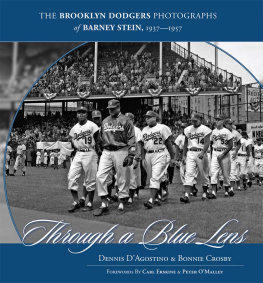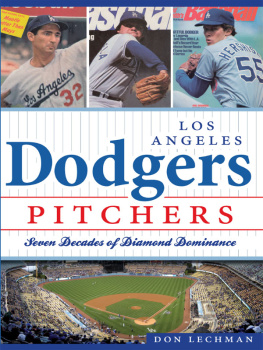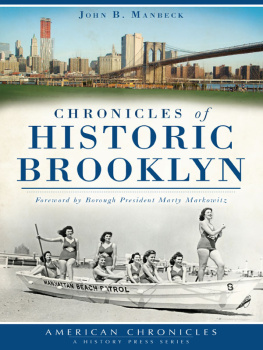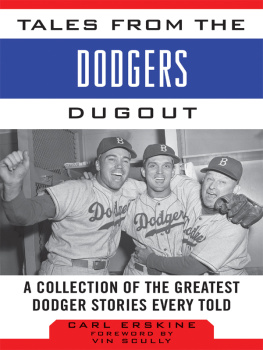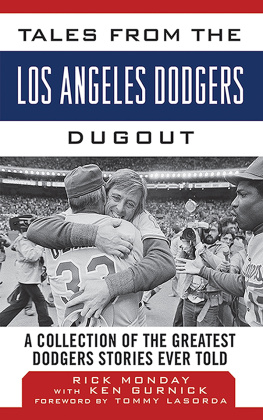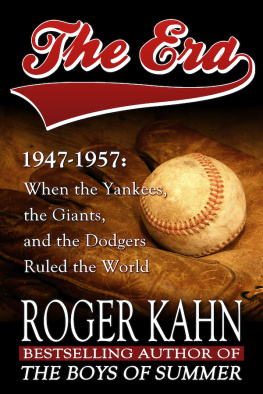Copyright 2007 by Dennis DAgostino and Bonnie Crosby
No part of this publication may be reproduced, stored in a retrieval system, or transmitted in any form by any means, electronic, mechanical, photocopying, or otherwise, without the prior written permission of the publisher, Triumph Books, 542 South Dearborn Street, Suite 750, Chicago, Illinois 60605.
Library of Congress Cataloging-in-Publication Data
Stein, Barney.
Through a blue lens : the Brooklyn Dodgers photographs of Barney Stein, 19371957 / Dennis DAgostino and Bonnie Crosby.
p. cm.
ISBN 978-1-57243-952-8
1. Brooklyn Dodgers (Baseball team)HistoryPictorial works. 2. Brooklyn Dodgers (Baseball team)History. 3. Stein, Barney. I. DAgostino, Dennis. II. Crosby, Bonnie, 1940 III. Title.
GV875.B7 S84 2007
796.357640974723dc22
2006038072
This book is available in quantity at special discounts for your group or organization. For further information, contact:
Triumph Books
542 South Dearborn Street
Suite 750
Chicago, Illinois 60605
(312) 939-3330
Fax (312) 663-3557
Printed in U.S.A.
ISBN: 978-1-57243-952-8
Design by Wagner/Donovan Design
All photos courtesy of The Barney Stein Photo Collection, LLC 2005
To Steve, my loving husband and teammate, and to Barneys progeny: Harriet, Adam, Nina, Gifford, Maxwell, and Finnian B.S.C.
As always, for my family: for Helene, and Jeanne and Freddie, and Emilie and Charlotteand most of all for Mom and Dad, for all the times they would drive along Bedford Avenue, point to the apartment building, and tell me all the stories of what used to be. I hope I got it right. D.D.
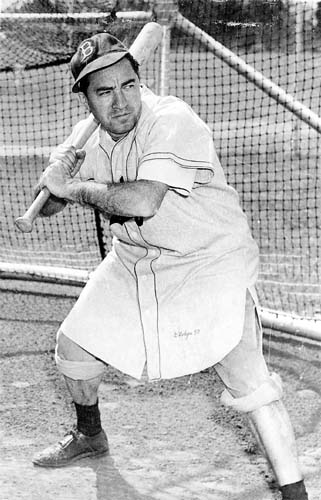
Barney Stein, sans camera, taking his cuts in spring training.
CONTENTS
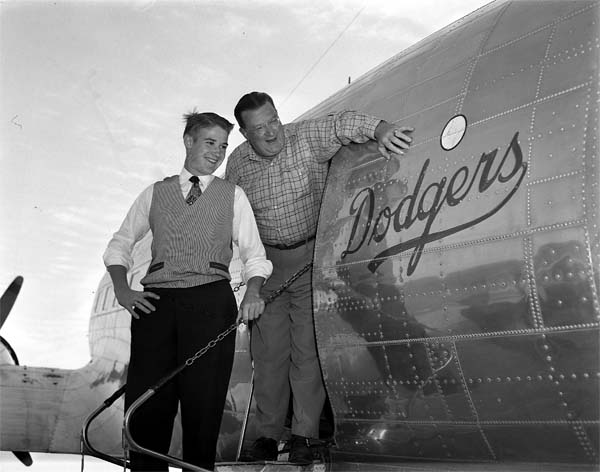
Peter OMalley (left) and father Walter admire the Dodgers team-owned DC-3, circa 1952.
FOREWORD
Barney Stein had the respect and admiration of everyone in the Dodgers organization. His keen eye for a picture enabled him to capture many memorable moments in Dodgers history. I am very happy that his family has decided to publish a collection of his award-winning photos.
Barneys respect for baseball, his sense of humor, and his engaging personality helped him capture historically significant events. All those who followed the Dodgers from 1937 through 1957 will thoroughly enjoy this book.
Peter OMalley
President, Los Angeles Dodgers, 19701998

Carl (far left) and teammate George Shuba flank Barney Stein and daughter Bonnie.
FOREWORD
During the 1940s and 50s at Ebbets Field, there was a historic and legendary baseball teamthe Brooklyn Dodgersaccompanied by a cadre of supporting characters. Among them was a small, wiry, and unassuming man named Barney Stein.
And of all the supporting castwriters, broadcasters, ground crew, special cops, ushers, ticket-takers, etc.no one placed into the historical record a more lasting documentation of the Boys of Summer than Barney Stein, through his world-class photographs.
Barneys quiet approach and quality of work as the Dodgers team photographer gained him great respect from the players. Jackie Robinson, Pee Wee Reese, Duke Snider, Roy Campanellaall future Hall of Famersand all the rest of us considered him practically a part of our team. Barney not only took action shots on the field and in the clubhouse, but he was also with us on off-day picnics and often set up family photos in our homes in Brooklyn. He was one of us.
It was an era when three outstanding major league teamsthe Yankees, Dodgers, and Giantscompeted in New York. Barney had his own competitors. A contemporary of other outstanding sports photographers such as Herbie Scharfman and Ozzie Sweet, Barney still took home numerous honors and awards.
This book captures countless special moments in a baseball era many say was the golden age of the game. Youll not only see and enjoy Barneys work, but as you view these photos, youll feel the emotions of the times.
Today, we Brooklyn Dodgers do fantasy camps at Dodgertown in Vero Beach. Well, when someone lines us up for a picture, and they flash the picture, one of us old Dodgers always says, Uno ms! That was Barneys line. He always wanted to take one more. Uno ms! Uno ms! That was his trademark.
So as you finish your first reading of this book, youre almost certain to flip back to page one and echo Barneys trademark, Uno ms! One more time!
Carl Erskine
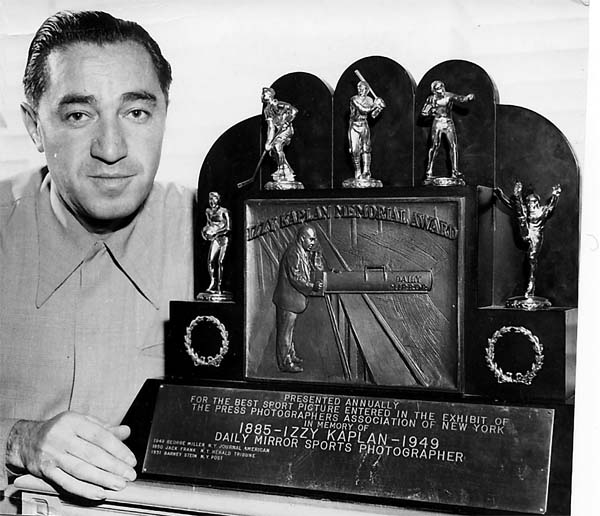
Barney Stein at the height of his career, with the 1951 Izzy Kaplan Memorial Trophy from the New York Press Photographers Association.
PREFACE
Believe it or not, this book was born out of my belief that the last thing this world needed was another book on the Brooklyn Dodgers.
No team in American sports has been more written about, analyzed, documented, celebrated, mourned, or eulogized. The five decades that followed the teams departure for Los Angeles have brought wave after wave of Brooklyn books, movies, and documentariessome wonderful, some historic, many useful, and some just plain bad.
So it wasnt much of a stretch to think that every possible facet of the Dodgers history in Brooklyn had been unearthed, hashed over, and then re-hashed over.
Everyone who grew up in Brooklyn in the 40s and 50s, it seems, has written a bookor at least been quotedabout growing up in Brooklyn in the 40s and 50s. After 50 years, how many different ways are left to describe Sandy Amoross catch? Is there anyone left who hasnt talked about walking down the street in Flatbush and catching Red Barbers voice coming out of every window? How many times does Ralph Branca have to answer another question about Bobby Thomson?
Half a century after their final game, it seemed that there really wasnt anything to say or write about the Brooklyn Dodgers that hadnt already been said or written.
But a little green book on my shelf kept telling me otherwise.
It was a worn paperback that I had picked up for about $5 more than two decades ago at a church-basement baseball card show in Manhattan. Its titleThe Rhubarb Patchwas a nod to Barbers homespun descriptions of life at Ebbets Field. Its subtitle, The Story of the Modern Brooklyn Dodgers, carried the Dodgers story up to the modern era of 1954.
And inside, over , was handiwork of a remarkable little man named Barney Stein.
On yellowing paper were photographs that still amazed. Dolph Camilli sliding home, spikes high. A 66 first baseman named High Howie Schultz on skis at Bear Mountain. Jackie Robinson on the bench for the Montreal Royals. Gil Hodges chasing an errant dog along the first-base line. Gladys Goodding at the organ. Branca weeping on the clubhouse steps after the Thomson homer.
As the official Dodgers team photographer from 1937 through 1957, Barney Stein had access that no other media member had. His photographsseen in newspapers, magazines, and club publications such as the Dodgers annual yearbooksreflected that access, as well as the high regard the Dodgers organization had for him.
Next page
